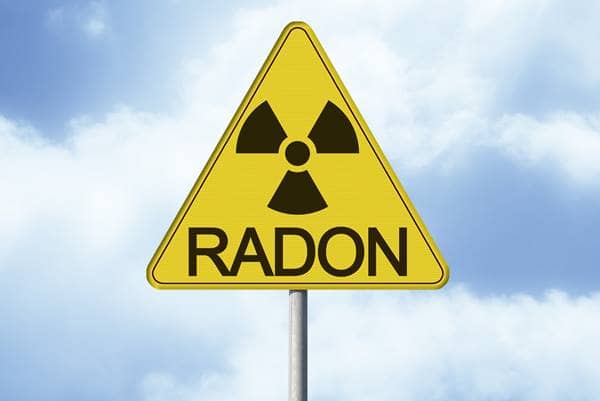
By: Libby Reed
Risk Solutions Specialist
Radon is a colorless, odorless, radioactive gas naturally present in soil, rock, air, and water. The gas is produced due to the decay of radioactive metals, and uranium found in the earth is the primary source of radon. Since high radon levels can be found in various places in the environment (from indoor facilities to underground spaces), workers in any industry can experience exposure to this hazardous chemical. Sites with possible radon exposures include factories, warehouses, offices, schools, homes, trenches, excavations, basements, cellars, mines, etc. If a worksite is found to have high radon levels, employers must ensure that they take precautions to keep their employees safe and healthy.
Possible health effects
When radon gas is inhaled, its particles deliver a dose of radiation to the lungs. This radiation can cause acute and long-term health consequences, such as:
- Coughing
- Shortness of breath
- Coughing up blood
- Chest pain
- Lung cancer
According to the United States Environmental Protection Agency (EPA), radon is estimated to cause tens of thousands of lung cancer deaths each year. Additionally, radon is the second leading cause of lung cancer in the United States, with the first being cigarette smoking.
Safety controls
Employers should take steps to remediate high radon levels in the workplace by working with professional, qualified contractors or personnel. Examples of remediation activities are sealing cracks and other openings in the foundation, installing ventilation systems, soil suction, and pressurization methods.
- Any workers involved in radon remediation must also be protected from the hazard. Safety controls for those individuals may include:
- Proper ventilation of the workplace with outdoor air to limit exposures to respiratory hazards as much as possible.
- Properly fitted, selected, and maintained respirators with a formal respiratory protection program.
- Monitoring/measuring worker radon exposure to ensure exposures do not exceed the OSHA exposure limit for adult employees of 100 pCi/L averaged over a 40-hour work week.
The Occupational Safety and Health Administration (OSHA) Ionizing Radiation Standard requires employers to conduct surveys as may be necessary to comply with the provisions of the standard (29 CFR 1910.1096(d)(1)). To view the full standard, click here.
Sources:
https://www.epa.gov/sites/default/files/2016-12/documents/2016_consumers_guide_to_radon_reduction.pdf
https://www.osha.gov/ionizing-radiation/hazards
https://www.osha.gov/laws-regs/regulations/standardnumber/1910/1910.1096#1910.1096

